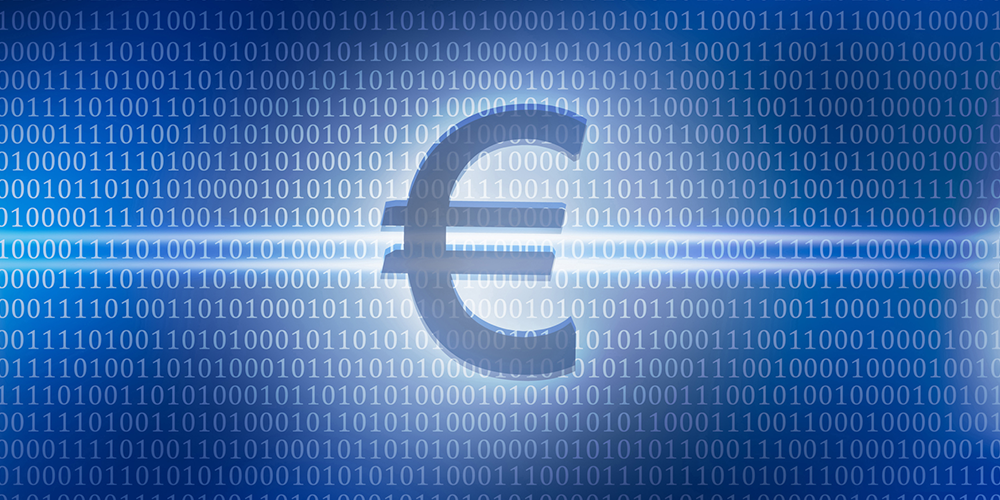The European Central Bank is preparing for a possible digital euro. This would be a liability of the bank, like paper currency and deposits. However, with digital currencies in high supply in a saturated market and traditional payment methods remaining popular, the ECB needs to assess if launching the digital euro is worth the effort.
Deposits at the ECB have grown enormously as a result of quantitative easing and now stand at €4tn. In the 21 years of their existence, euro banknotes have increased seven times in value – up to €1.6tn – amounting to a compounded annual increase of about 10%. The corresponding figure for the dollar is 6.5%, while sterling is 5.2% and the Swiss franc is 4.4%.
Some argue that the popularity of cash is due to growing illegal activities, but this is unlikely to explain the phenomenon. Until now, the increase of the euro in circulation has been very steady; indicators of criminal activity do not have such a smooth profile. And the increase in euro coins shows more or less the same pattern. Criminals and tax evaders are unlikely to make extensive use of coins.
It seems that people actually like holding euro banknotes, despite the fact that, for many retail purposes, they are being replaced by more convenient digital means – online platforms, payment cards and smartphone applications. This preference has implications for the digital euro.
Accounts for the digital euro will be offered mainly by banks and all front-end functions will be carried out by them. Importantly, the digital euro will look very much like a bank deposit and banks will be responsible for onboarding and offboarding, know your customer and anti-money laundering checks, as well as providing all services normally associated with deposits – online banking, payment cards and apps. From a user perspective, there will be no difference between making a digital euro deposit or making a deposit at a bank as they will include the same processes, require the same information and provide the same forms to fill out.
The introduction of a digital euro would most likely result in a move away from bank deposits, rather than from paper currency. Banknotes have unique characteristics – simplicity, absolute privacy and tangibility – that are highly valued, which the digital euro will never have. However, substitution between digital euros and deposits entails complications and concerns for the conduct of monetary policy and for financial stability.
The digital euro would magnify the risk of bank runs because it would offer a risk-free online alternative to bank deposits. In the euro area, this risk is compounded by the incompleteness of the banking union, specifically the lack of area-wide deposit insurance.
However, the main unknown of the project is the reception by the market – already saturated with digital payment systems. To compete with powerful incumbents like Apple Pay or Google Pay, or even smaller but efficient service providers like Revolut, the new entrant would have to be very innovative. This is not likely to be the case for the digital euro. Failure to market it successfully would have negative reputational and cost implications for the ECB.
The private digital payments sector has been quite efficient over the last 20 years. It is hard to identify market failures that justify public intervention. The arguments in favour of a digital euro today are not strong enough to justify the launch of the currency. However, this decision will not made for several years at least, which means there is plenty of room for unknowns in the meantime.
We could witness, for example, a collapse in the use of banknotes, which current digital payment providers and their infrastructures cannot handle with the available technologies. Or we could experience financial instability, requiring the ECB to step in to preserve the functionality of the payments system. Or there could be strategic security conditions requiring more state-controlled monetary and payment infrastructures.
Fortunately, these are very unlikely scenarios, but not impossible ones, which may call for central banks to step in, perhaps within a short time. The best advice one can give to the ECB, and to other central banks, is: continue to prepare, otherwise, wait and see.
Ignazio Angeloni is part-time professor at the Robert Schuman Center of the European University Institute, a Senior Policy Fellow at SAFE and a former member of the European Central Bank Supervisory Board.
This article is based on a keynote address given at OMFIF’s Digital Monetary Institute symposium in London on 9 May 2023. Read the full speech here.
